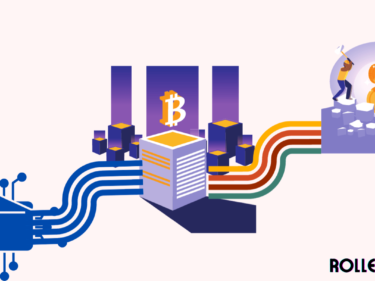Common Smart Contract Vulnerabilities and Preventive Measures

Smart contracts are self-executing digital contracts deployed on blockchain networks to automate various transactions, such as asset transfers, escrow services, and voting systems. They are considered a powerful tool to enhance trust and transparency in the digital economy as they eliminate the need for intermediaries and rely on the code’s integrity to enforce the terms of the agreement.
However, like any other computer program, smart contracts are susceptible to bugs, errors, and vulnerabilities that can compromise their security and cause financial losses to their users. This article will discuss some common smart contract vulnerabilities and the preventive measures to mitigate their impact.
Reentrancy Attacks
One of the most significant vulnerabilities in smart contracts is reentrancy attacks. These attacks allow malicious actors to repeatedly call a vulnerable contract function before the previous function call is completed, resulting in unexpected behaviour that can lead to loss of funds.
For example, an attacker can exploit a reentrancy vulnerability in a contract that allows withdrawals by repeatedly calling the withdrawal function before the previous withdrawal is completed. This can cause the contract to release more funds than the user has, resulting in a loss of funds.
Preventive Measures:
Developers can prevent reentrancy attacks by implementing the following measures:
Use the “Checks-Effects-Interactions” (CEI) pattern to ensure that a contract checks the conditions for the interaction with other contracts before executing any effects. This can prevent a malicious contract from reentering the vulnerable contract before the effects of the previous call are completed.
Use the “Withdraw Pattern” to separate the withdrawal function from the main contract logic. This can prevent an attacker from repeatedly calling the withdrawal function and draining the contract’s funds.
Integer Overflow/Underflow Attacks
Smart contracts can also be vulnerable to integer overflow and underflow attacks. These attacks occur when a contract function performs a mathematical operation on a variable that exceeds its maximum or minimum value, causing unexpected behavior that can lead to loss of funds.
For example, a contract that stores the balance of users as uint256 can be vulnerable to an integer overflow attack if the balance exceeds the maximum value of 2^256-1. This can cause the balance to wrap around and become a small value, resulting in a loss of funds.
Preventive Measures:
Developers can prevent integer overflow/underflow attacks by implementing the following measures:
Use SafeMath libraries that provide secure arithmetic operations and prevent integer overflow/underflow.
Use the appropriate data type for the variables that handle large numbers, such as uint256 for Ethereum.
Implement input validation checks to ensure that the user inputs do not cause integer overflow/underflow.
Access Control Vulnerabilities
Access control vulnerabilities occur when a smart contract function allows unauthorized access to sensitive information or privileges, compromising the contract’s security.
For example, a contract allowing users to transfer tokens can be vulnerable to an access control vulnerability if it allows users to transfer tokens without checking their authorization level. This can allow an unauthorized user to transfer tokens and compromise the contract’s security.
Preventive Measures:
Developers can prevent access control vulnerabilities by implementing the following measures:
Use the “role-based access control” (RBAC) pattern to restrict access to sensitive functions and information. This can ensure that only authorized users can access and modify the contract’s state.
Implement input validation checks to ensure that the user inputs do not contain any malicious code or parameters that can compromise the contract’s security.
Front-running Attacks
Front-running attacks are an exploit that takes advantage of the time delay between the initiation of a transaction and its confirmation on a blockchain network. These attacks occur when a malicious actor, usually a miner or a trader, gains advanced knowledge of a pending transaction and exploits this information to their advantage.
This attack works because the malicious actor intercepts a transaction that is about to be broadcasted to the network and then places a similar transaction with a higher gas fee. The higher gas fee ensures that the transaction is included in the next block before the original transaction, effectively front-running the original transaction and taking advantage of its predicted effect on the market.
.As such, taking proactive measures to prevent them is important. By keeping transaction details private, using privacy tools, implementing smart contract solutions, using limit orders, using trusted platforms, and increasing gas fees, users can reduce the likelihood of front-running attacks and ensure the security of their transactions.
Denial of Service Vulnerability
Denial of Service (DoS) vulnerabilities occur when a smart contract can be overloaded with requests, causing it to crash or become unresponsive. This can lead to a loss of funds or a disruption of the contract’s functionality.
Preventive Measures: Developers should implement gas limits to prevent the contract from being overloaded with requests. Additionally, they should use defensive programming techniques to ensure that the contract can handle unexpected inputs and errors.
Conclusion
Developers should take proactive measures to prevent these vulnerabilities by implementing robust access control systems, using safe math libraries, avoiding the use of timestamps, and implementing gas limits to prevent DoS attacks.
Additionally, Smart contracts should be verified by independent third-party smart contract auditors. The purpose of smart contract audit is to identify and eradicate any possible threats and vulnerabilities that could compromise the security of the smart contracts.



